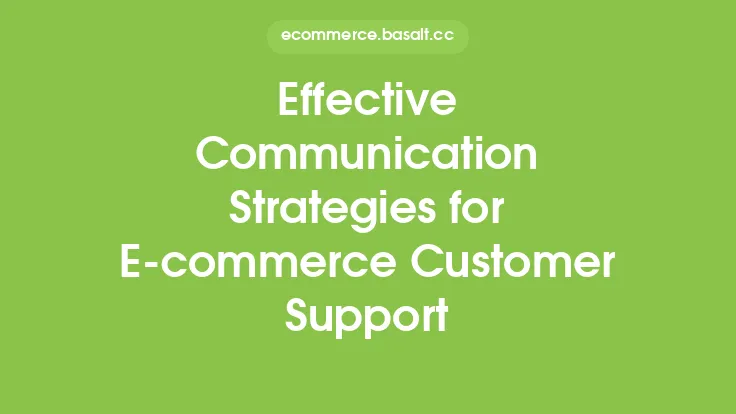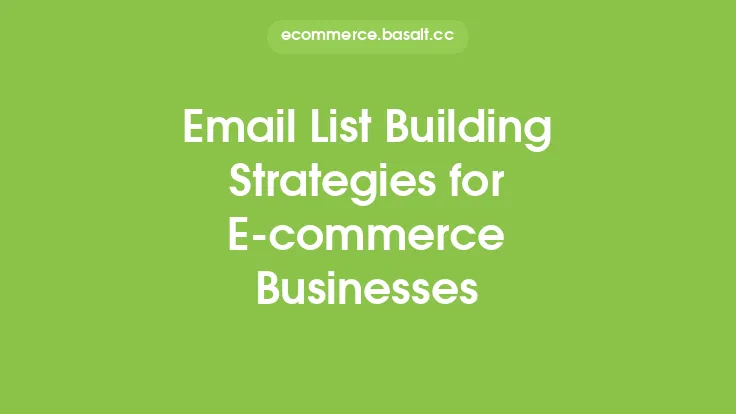In the realm of e-commerce, understanding and catering to the diverse needs of customers is crucial for businesses to thrive. One of the most effective ways to achieve this is through customer segmentation, a process that involves dividing a customer base into smaller groups based on shared characteristics, behaviors, or preferences. By doing so, e-commerce businesses can tailor their marketing efforts, product offerings, and customer service to meet the unique needs of each segment, ultimately leading to increased customer satisfaction, loyalty, and revenue.
Introduction to Customer Segmentation
Customer segmentation is a strategic approach that enables e-commerce businesses to identify and target high-value customer groups, improve customer engagement, and reduce marketing waste. It involves analyzing customer data, such as demographics, purchase history, browsing behavior, and feedback, to create detailed profiles of each segment. By understanding the distinct needs and preferences of each segment, businesses can develop targeted marketing campaigns, offer personalized product recommendations, and provide tailored customer support.
Types of Customer Segmentation
There are several types of customer segmentation that e-commerce businesses can use, including:
- Demographic segmentation: based on age, gender, income, occupation, and education level
- Behavioral segmentation: based on purchase history, browsing behavior, and engagement with marketing campaigns
- Psychographic segmentation: based on lifestyle, values, interests, and personality traits
- Geographic segmentation: based on location, climate, and cultural differences
- Firmographic segmentation: based on company characteristics, such as industry, size, and job function
Each type of segmentation offers a unique perspective on the customer base, and businesses can use a combination of these approaches to create a comprehensive understanding of their customers.
Benefits of Customer Segmentation
The benefits of customer segmentation are numerous and well-documented. By dividing their customer base into smaller, more homogeneous groups, e-commerce businesses can:
- Improve customer engagement and loyalty
- Increase conversion rates and average order value
- Enhance customer satisfaction and retention
- Reduce marketing waste and improve return on investment (ROI)
- Gain a competitive advantage in the market
- Develop more effective marketing strategies and tactics
- Improve product development and innovation
Implementing Customer Segmentation Strategies
To implement effective customer segmentation strategies, e-commerce businesses should follow a structured approach:
- Collect and analyze customer data from various sources, such as website analytics, customer feedback, and social media.
- Identify the most relevant segmentation criteria, such as demographics, behavior, or firmographics.
- Develop detailed customer profiles and segment descriptions.
- Assign customers to their respective segments based on their characteristics and behavior.
- Develop targeted marketing campaigns and product offerings for each segment.
- Continuously monitor and refine the segmentation strategy based on customer feedback and market trends.
Common Customer Segmentation Mistakes
While customer segmentation can be a powerful tool for e-commerce businesses, there are common mistakes to avoid:
- Over-segmentation: creating too many segments can lead to complexity and inefficiency.
- Under-segmentation: failing to segment the customer base can result in generic marketing efforts that fail to resonate with customers.
- Inaccurate segmentation: using outdated or incomplete data can lead to incorrect segment assignments and ineffective marketing efforts.
- Lack of segmentation maintenance: failing to regularly review and update the segmentation strategy can result in stagnation and decreased effectiveness.
Best Practices for Customer Segmentation
To get the most out of customer segmentation, e-commerce businesses should follow best practices, such as:
- Using a combination of segmentation criteria to create a comprehensive understanding of the customer base.
- Continuously collecting and analyzing customer data to refine the segmentation strategy.
- Developing targeted marketing campaigns and product offerings that cater to the unique needs of each segment.
- Monitoring and measuring the effectiveness of the segmentation strategy using key performance indicators (KPIs) such as conversion rates, customer satisfaction, and ROI.
- Regularly reviewing and updating the segmentation strategy to ensure it remains relevant and effective.
Tools and Technologies for Customer Segmentation
There are various tools and technologies available to support customer segmentation, including:
- Customer relationship management (CRM) software
- Marketing automation platforms
- Data analytics and business intelligence tools
- Machine learning and artificial intelligence (AI) algorithms
- Customer data platforms (CDPs)
These tools can help e-commerce businesses collect, analyze, and act on customer data, enabling them to develop and implement effective customer segmentation strategies.
Future of Customer Segmentation
The future of customer segmentation is exciting and rapidly evolving. With the increasing use of AI, machine learning, and big data analytics, e-commerce businesses will be able to develop even more sophisticated and accurate segmentation strategies. The use of real-time data and analytics will enable businesses to respond quickly to changes in customer behavior and preferences, while the integration of emerging technologies such as the Internet of Things (IoT) and augmented reality (AR) will provide new opportunities for customer segmentation and personalization. As the e-commerce landscape continues to evolve, customer segmentation will remain a critical component of any successful business strategy.





